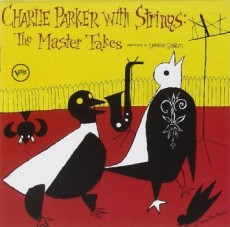
Daily Dose Of Jazz…
Charles Parker, Jr. was born on August 29, 1920 in Kansas City, Kansas but was raised in Kansas City Missouri, the only child of Adelaide and Charles Parker. He began playing the saxophone at age 11 and by age 14 he joined his school’s band using a rented school instrument. His father, a pianist, dancer and singer on the Theater Owners Booking Association (T.O.B.A.) circuit, was often absent but provided some musical influence. His biggest influence at that time was a young trombone player who taught him the basics of improvisation.
By the late 1930s Parker began to practice diligently. During this period he mastered improvisation and developed some of the ideas that led to bebop. He played with local bands in jazz clubs around his hometown perfecting his technique, with the assistance of Buster Smith, whose dynamic transitions to double and triple time influenced the young man’s developing style.
In 1938, he joined pianist Jay McShann’s territory band touring nightclubs and other venues in the Southwest, Chicago and New York City. During this stint with McShann he made his professional recording debut. As a teenager, Charlie developed a morphine addiction while hospitalized after an automobile accident, and subsequently became addicted to heroin.
In 1939 Parker moved to New York City, to pursue a career in music. He held several other jobs as well. He worked for nine dollars a week as a dishwasher at Jimmie’s Chicken Shack, where pianist Art Tatum performed. In 1942 he left McShann and played with Earl Hines for one year alongside Dizzy Gillespie. A strike by the American Federation of Musicians unfortunately resulted in few recordings documenting this period of his playing. He played in after-hours clubs in Harlem with other young cats at the time, such as, Thelonious Monk, Charlie Christian, Mary Lou Williams and Kenny Clarke, creating a music that white bandleaders couldn’t usurp and profit from like they did with swing.
It was while playing Cherokee in a jam session with William “Biddy” Fleet that he hit upon a method for developing his solos that enabled one of his main musical innovations, the 12 semitones of the Chromatic scale could lead melodically to any key, breaking some of the confines of simpler jazz soloing.
By 1945 after the lifting of the recording ban that Charlie’s collaboration with Dizzy Gillespie, Max Roach, Bud Powell and others would have a substantial effect on the jazz world beginning with their June 22, 1945 Town Hall performance. Bebop soon gained wider appeal among musicians and fans alike.
On November 26th of that same year he led a record date for Savoy Records that is arguably the “greatest jazz session ever” with Miles Davis, Curly Russell, and Max Roach. Shortly afterward, the Parker/Gillespie band traveled to an unsuccessful engagement at Billy Berg’s club in Los Angeles. However staying in California he spiraled down into great hardship due to his heroin addiction, ultimately being committed to Camarillo State Mental Hospital for six months.
Although he produced many brilliant recordings during this period, Parker’s addiction led to increasingly erratic behavior. Recording sessions were hard, but he recorded the classic Relaxin’ at Camarillo before his return to New York. He would record a series of sessions with Savoy and Dial record labels, innovate by fusing jazz and classical elements into what would become known as Third Stream, releasing Charlie Parker with Strings.
The influential jazz musician who was at the gate of bebop and the man affectionately known as Yardbird or simply Bird, Charlie Parker died on March 12, 1955, in the suite of his friend and patroness Baroness Pannonica de Koenigswarter at the Stanhope Hotel in New York City while watching The Dorsey Brothers Stage Show on television. The official causes of death were lobar pneumonia and a bleeding ulcer but also an advanced case of cirrhosis and he had suffered a heart attack. The coroner who performed his autopsy mistakenly estimated Parker’s 34-year-old body to be between 50 and 60 years of age. His friend Dizzy Gillespie paid for the funeral arrangements and organized a lying-in-state, a Harlem procession officiated by Congressman and Reverend Adam Clayton Powell Jr., as well as a memorial concert.
He left the world classic jazz compositions, arrangements and versions of tunes such as Ornithology, How High The Moon, Yardbird Suite, Billie’s Bounce, Now’s The Time, Au Privave, Barbados, Relaxin’ at Camarillo, Bloomdido, Blues for Alice, Laird Baird, Si Si, Constellation, Donna Lee, Scrapple From The Apple, Cheryl, Ah-Leu-Cha, Anthropology and Cool Blues among others.
He was posthumously awarded a Grammy for Best Performance by a Soloist in 1974, a Grammy Lifetime Achievement Award in 1984, had two albums Jazz At Massey hall and Charlie Parker with Strings and two singles Ornithology and Billie’s Bounce inducted into the Grammy Hall of Fame. He has been inducted into the Big Band and Jazz Hall of Fame and the Jazz at Lincoln Center: Nesuhi Ertegun Jazz Hall of Fame and had a 32 cent stamp commissioned and issued by the United State Post Office.
More Posts: saxophone


